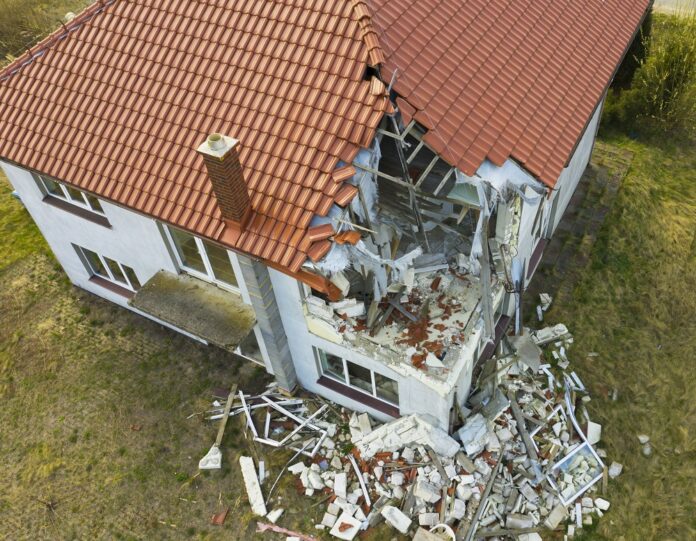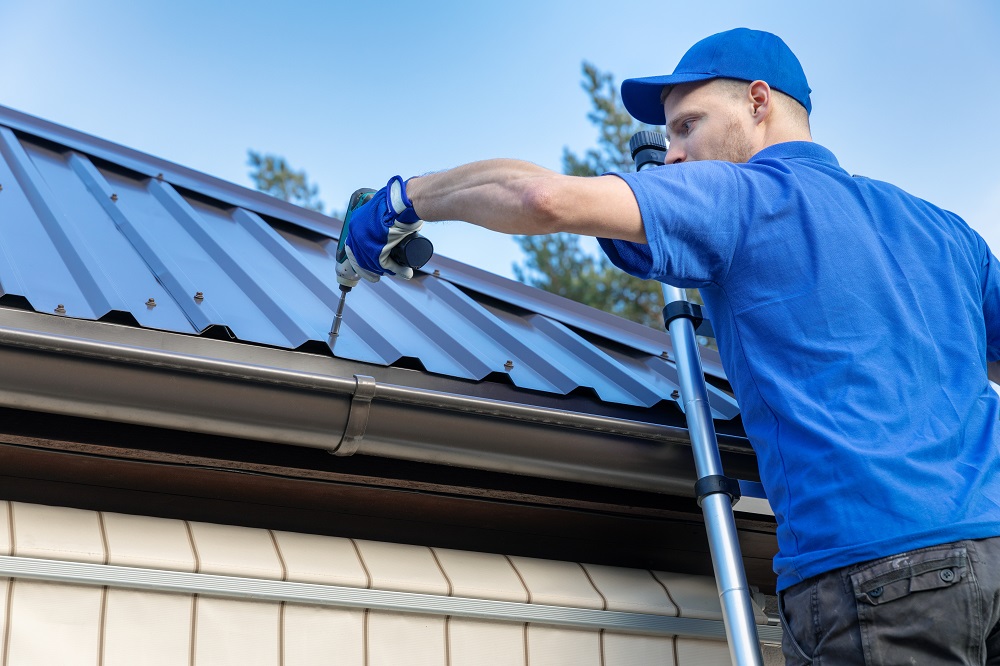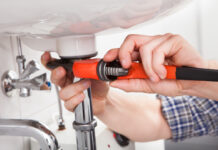Roof issues may be a worry for property owners since they often result in expensive and stressful renovations. However, fully understanding the common roof concerns and the ways to minimize them will save you money and time.
Early Detection of Problems
Roofing concerns are especially troublesome since the issue is often unnoticed until it becomes severe. It’s not every day that you climb to your roof to check its state and look for any warning signs of roof deterioration.
Nevertheless, early detection of problems may save you from all the headaches. If you’re living near Idaho, you may contact roof contractors Idaho Falls to help you with identifying issues concerning your roof. They can advise you on how to properly address them.
To help you look out for your roof’s health, here a list of frequent roof problems and how to deal with them:
1. Clogged Gutters
Gutters are used to direct water that is running freely through a downspout. Broken or jammed gutters may cause a variety of problems, one of which is water pooling. In this scenario, it can inevitably seep through the roof and cause more problems.
Have you inspected your gutter lately? They could present alerts that they’re about to collapse. Rust on gutters is among the simplest to find. It’s a sign that water has been accumulating in the gutters for an extended time, corroding and deteriorating them.
If, through careful examination, you discover that what you assumed was corrosion was actually dirt, you still have some problems. The dirt in the gutters is most often caused by overflowing wastewater. This is an obvious symptom of clogging.
To avoid problems, understand the importance of regularly inspecting your gutters for any clutter. Additionally, it could be useful to incorporate filters into your gutters to keep bigger, more harmful particles out of the structure.
2. Roof Leaks
A leaking roof is something more than a minor inconvenience. It may have a detrimental impact on the entire structure of your house. It increases the likelihood of catching fire and collapsing the whole building.
Along with the damages to your house, roof leaks may have a negative impact on your health. Untended roof leaks may result in the growth of mold and bacteria, which can trigger asthma and induce respiratory issues. That’s why it’s important to detect roof leaks as soon as possible.
The presence of stains on your internal ceilings is among the most accurate early signals of a roof leak. Mostly, the stains resemble muddy pools of water with faint circles along the sides. Though some stains may reside in the middle of the ceiling, you must keep an eye on corners where they’re commonly overlooked.
You should also do an outdoor inspection. A visual examination of the roof may aid in the detection of missing or broken shingles. If the impact is limited to a certain area, roof repair might solve the issue. However, roof reconstruction might be needed if the damage is serious.
3. Flashing Failure
Roof flashing is a structure that is installed at leak-prone areas on a roof. It directs water away from leaky places onto the gutters of the house. It’s also critical in ensuring the structural stability of your roof.
Some parts of the roof are more susceptible to leakage than others. There are sites where water pools, such as gaps formed by the intersection of roof slopes. Junctures between the roof and another object are also vulnerable to leakage. This is why flashing is used wherever a roof meets other components of the house, like a chimney.
Flashing defends the roof against leaks by incorporating an additional piece of material specially engineered to reroute water. The possibility of leakage rises exponentially if the flashing is lacking or if the flashing is defective or decaying.
To prevent leakage and ensure the safety of your house, it’s essential to maintain the flashing in great shape and completely working. Roof checks should be done regularly to detect any disruption to flashing and assess if modifications are needed.
4. Pooled Water
Is your roof prone to pooling water? Over cycles of heavy rainfall, any flat roof may accumulate some rainwater. If your roof collected some water after a storm but dries up after some time, your roof is okay. However, the issue arises as water accumulates for a long time. Therefore, if the flat roof collects water that doesn’t disappear or recede in the next 48 hours, it must be repaired.
The most apparent issue with pooled water is it might cause leaks. If water is correctly flowing away from your roof, it would easily reach the roof’s lowest point, which is the gutter. However, if the water pools, the collected water would follow the lowest possible spot.
If the roof has some gaps or openings, water can seep into them and straight into your ceiling. Even if there were no gaps, the pooled water might erode the roof’s surface, causing holes and crevices.
The drainage structure should be the first area to be checked if water is accumulating on the roof. Begin by inspecting for clogged drains. Commonly, a congested drain may lead to significant water accumulation on a roof. The issue can be resolved by cleaning the drain.
If it appears that drainage isn’t really a problem, you have an alternative. First, you must find the lowest area of the roof. If water is aggregating in one location, that means it’s the lowest point of your roof.
A low spot may be fixed in a number of ways. A skilled roofer would normally be able to repair it with roofing plaster. They would plaster the low area and level it to meet the roof’s current surface.
5. Sagging Roof
Is your roof appearing to be bent and drooping rather than straight? It’s an indication of a sagging roof. A slight sag doesn’t necessarily signify immediate catastrophe. Nevertheless, it’s a signal that you should take appropriate measures.
You’ll have to check your roof to find out. It may be inspected from both the interior and exterior of your home. To check from the inside, you must first access the attic. Ensure that you have a point of light powerful enough to view all the elements of the roof.
The roof must be in a triangular shape due to the supporting beam holding them together. If you find an uneven distribution in your roof that’s not intended, you might have a sagging roof. You must then check the exterior part of the roof.
When inspecting externally, view the roof from the side rather than the end. Determine the roof’s edge position and take a measurement using a flat plank or perhaps a ruler. If the curve differs from the ruler, you definitely have an issue. This can be fixed and strengthened if it’s sagging.
If your roof begins to sag, it may continue to deteriorate and become more difficult to fix. To safeguard your house, contact a roofing specialist who could ascertain the source of sagging, evaluate the extent of the impact, and suggest appropriate repair solutions.
6. Inadequate Ventilation
Roof ventilation is a set of vents that circulates air within a house to maintain a good temperature. Unfortunately, warm air can get stuck inside your house without the mechanism used for roof ventilation. This creates a number of issues for your house.
While inadequate ventilation might appear to be a minor issue, it may result in increased electric bills and costly repairs if it’s not addressed immediately. Therefore, it’s essential to note how well ventilated the roof is to avoid further damages.
If your electricity bills are very costly, you may have ineffective roof ventilation. Insufficient airflow traps humid air within your roof, raising the temperature inside and forcing the heating and cooling device to operate harder.
If you notice symptoms of inadequate roof ventilation, it’s essential to make some improvements. For roofers, installing roof vents is a simple job. Numerous roofing ventilation solutions may be placed beneath the roof. You may consult your contractor to help you find what suits you best.
7. Impact Damage
Impact damages are often a result of hailstorms. However, these may also arise when branches drop from a tree to your roof. In certain instances, impact destruction may be severe and noticeable, like when a big tree falls on the roof, removing entire shingles, or even allowing the roof’s structure to fail entirely.
Although hailstones may cause noticeable indentations or cracks in asphalt roofing, it’s not often the issue. To assess the extent of harm the roof has incurred, look closely at the shielding granules and broken metal. If you notice metal flashing on the roof, this probably means that hail has punctured the roofing and ruptured the shielding granules.
When inspecting the roof following a hailstorm, watch for darker areas. This suggests that the sun-faded granules on the top were displaced, revealing the darker layers underneath. If you suspect that your roof has been damaged by hail, the best thing you can do is consult a licensed contractor for a piece of expert advice.
8. Thermal Shock
Thermal shock is associated with major temperature shifts on the roof. It occurs as the roof structure on the house stretches and shrinks rapidly as a reaction to temperature changes. Thermal shock reaction may lead to leakage over time, requiring the structure to be fixed or replaced.
Metal roofs are highly susceptible to thermal shock, as it triggers the metal sheet to shift slowly, eventually opening up gaps. In addition, due to the shifting of the roof structure, the flashing may become faulty. This produces holes from which water may infiltrate.
Naturally, temperatures fluctuate constantly throughout the year and during night and day. These natural, daily temperature variations are unlikely to trigger significant roof damage, particularly if the roof is constructed with suitable roofing for your area’s weather.
No roof is meant to last indefinitely, but a sturdy roof might last years with proper care. Regular inspections are critical for detecting early symptoms of thermal shock and addressing the possible repairs promptly to avoid further complications.
9. Freeze-Thaw Damage
The freeze-thaw cycle happens when there is precipitation, and the temperatures drop below zero, then rise beyond the freezing point, and afterward fall below again. This is a continual weather pattern that occurs in areas where winter is in effect.
Since the roof is vulnerable to this cycle, it’s important to spot damage as quickly as possible. The earlier the gaps are discovered, the fewer threat to the roof in the future. Freezing water spreads, raising strain on the roof and enlarging the gap. This degrades the foundation of the roof, which may contribute to roof leaks.
Make sure to check the home’s structure and roof for gaps before winter sets in. Because of the prolonged term of the freeze-thaw period, these gaps would eventually expand. Contact a specialist if you’re uncertain how to fix a broken shingle or if you find a leak in your roof.
10. Poorly Installed Roofs
A badly constructed roof may lead to a variety of issues down the road, including deterioration and more expensive roof repair. Therefore, you want to prevent sloppy roofing works when you employ roofers.
When your roofer does a good job, you can find that the roof appears consistent and even. This ensures that every component of the roof was installed with great caution. Scan to see if the shingles are well aligned or if one section is more uneven than the others.
If you become aware of this flaw, notify a reputable specialist immediately. A poorly installed roof is a headache and a source of frustration. If you’ve ever seen a poorly built roof, seek out a contractor who can ensure it never happens again! Avoid contacting the same contractor twice if the first build was unsuccessful.
Bottom Line
Keep an eye out for these 10 warnings of roof issues. If you spot them soon enough, you can save time and money. Along with being attentive, keep the roofing repairs updated. By noticing the early signs of roof damage, you’ll significantly reduce the risk of serious roof destruction.



















